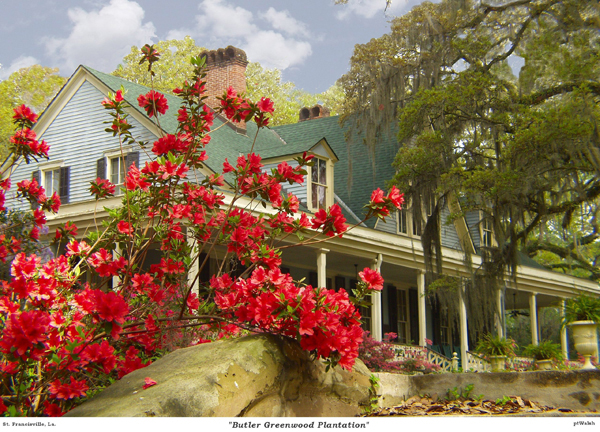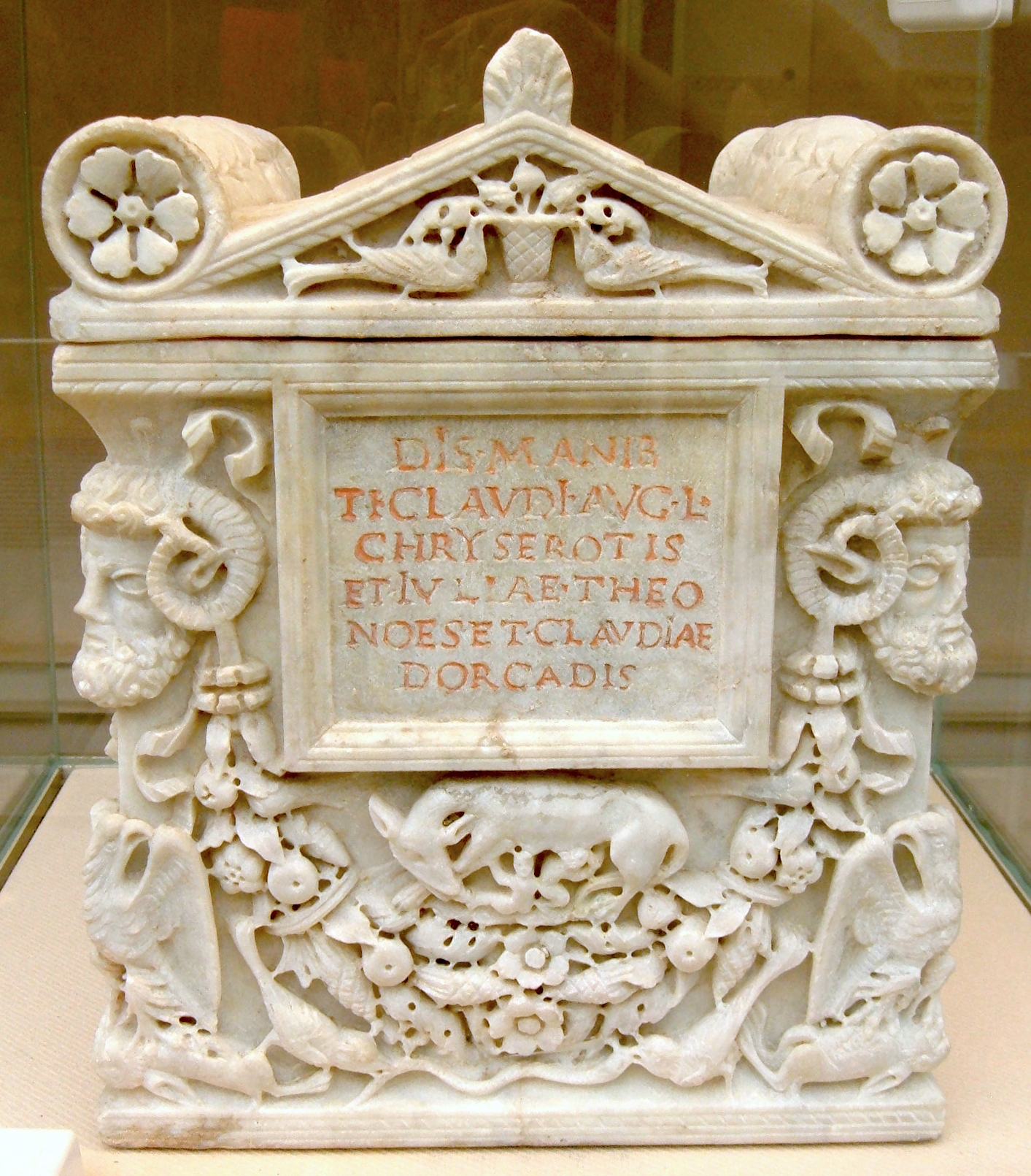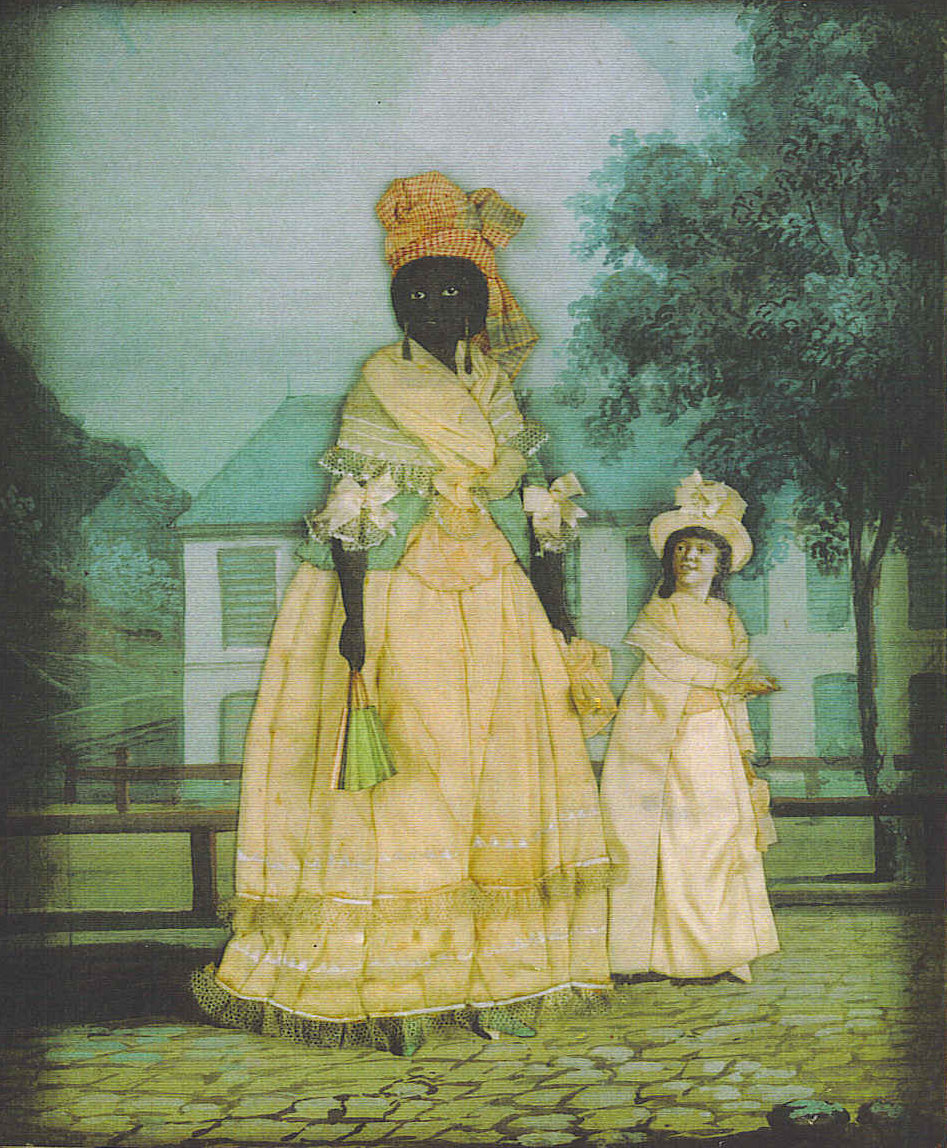|
Butler Greenwood Plantation
The Butler Greenwood Plantation is a plantation in Louisiana. It is on U.S. Route 61, to the north of St. Francisville, Louisiana. It is listed on the National Register of Historic Places. History The plantation was created by Dr. Samuel Flower, a Quaker physician who relocated from Pennsylvania during the 1770s when the area was British territory. Later, when Spain gained control (see St. Francisville, Louisiana, history), he gave medical treatment to Governor Manuel Gayoso. When Dr. Flower died in 1813, the year after Louisiana became a state, his eight heirs would divide thousands of arpents of land in the Felicianas, Rapides Parish, along Bayou Manchac, and in the Mississippi Territory. The family residence bordering Bayou Sara, appraised in the estate division at $12,300, was left to Dr. Flower's 20-year-old married daughter Harriett. Harriett Flower's husband, Judge George Mathews, was a superior court judge in the Mississippi Territory and then in the Te ... [...More Info...] [...Related Items...] OR: [Wikipedia] [Google] [Baidu] |
Plantations In The American South
A plantation complex in the Southern United States is the built environment (or complex) that was common on agricultural plantations in the American South from the 17th into the 20th century. The complex included everything from the main residence down to the pens for livestock. Until the abolition of slavery, such plantations were generally self-sufficient settlements that relied on the forced labor of enslaved people. Plantations are an important aspect of the history of the Southern United States, particularly the antebellum era (pre-American Civil War). The mild temperate climate, plentiful rainfall, and fertile soils of the southeastern United States allowed the flourishing of large plantations, where large numbers of enslaved Africans or African Americans were held captive and forced to produce crops to create wealth for a white elite. Today, as was also true in the past, there is a wide range of opinion as to what differentiated a plantation from a farm. Typically, th ... [...More Info...] [...Related Items...] OR: [Wikipedia] [Google] [Baidu] |
George Mathews (Georgia)
George Mathews (August 30, 1739 – August 30, 1812) was an American soldier and politician from the U.S. States of Virginia and Georgia. He was a brevet brigadier general in the Continental Army, the 20th and 24th Governor of Georgia, a U.S. Representative from Georgia, and the leading participant in the Patriot War of East Florida. Born in Augusta County in the Virginia Colony, Mathews was in early life a merchant and planter. As an officer in the colonial militia, he gained statewide fame for his role in the Battle of Point Pleasant of Dunmore's War. He was afterward elected to the House of Burgesses from Augusta County, but did not attend a session. On the outbreak of the American Revolutionary War, he served as colonel of the 9th Virginia Regiment in the Continental Army. He and his entire regiment were captured on October 4, 1777, in the Battle of Germantown. Mathews spent the next four years as a prisoner of war, including two years on a British prison ship. He was brev ... [...More Info...] [...Related Items...] OR: [Wikipedia] [Google] [Baidu] |
Plantation House In The Southern United States
A plantation house is the main house of a plantation, often a substantial farmhouse, which often serves as a symbol for the plantation as a whole. Plantation complexes in the Southern United States, Plantation houses in the Southern United States and in other areas are known as quite grand and expensive architectural works today, though most were more utilitarian, working farmhouses. Antebellum American South In the Southern United States, American South, Antebellum South, antebellum plantations were centered on a "List of plantations in the United States, plantation house," the residence of the owner, where important business was conducted. Slavery in the United States, Slavery and plantations had different characteristics in different regions of the South. As the Upper South of the Chesapeake Bay colonies developed first, historians of the antebellum South defined planters as those who held 20 enslaved people. Major planters held many more, especially in the Deep South as i ... [...More Info...] [...Related Items...] OR: [Wikipedia] [Google] [Baidu] |
Freedmen
A freedman or freedwoman is a formerly enslaved person who has been released from slavery, usually by legal means. Historically, enslaved people were freed by manumission (granted freedom by their captor-owners), abolitionism, emancipation (granted freedom as part of a larger group), or self-purchase. A fugitive slave is a person who escaped enslavement by fleeing. Ancient Rome Rome differed from Greek city-states in allowing freed slaves to become Plebs, plebeian citizens. The act of freeing a slave was called ''manumissio'', from ''manus'', "hand" (in the sense of holding or possessing something), and ''missio'', the act of releasing. After manumission, a slave who had belonged to a Roman citizen enjoyed not only passive freedom from ownership, but active political freedom ''(libertas)'', including the right to vote. A slave who had acquired ''libertas'' was known as a ''libertus'' ("freed person", grammatical gender, feminine ''liberta'') in relation to his former master, ... [...More Info...] [...Related Items...] OR: [Wikipedia] [Google] [Baidu] |
American Civil War
The American Civil War (April 12, 1861 – May 26, 1865; also known by other names) was a civil war in the United States. It was fought between the Union ("the North") and the Confederacy ("the South"), the latter formed by states that had seceded. The central cause of the war was the dispute over whether slavery would be permitted to expand into the western territories, leading to more slave states, or be prevented from doing so, which was widely believed would place slavery on a course of ultimate extinction. Decades of political controversy over slavery were brought to a head by the victory in the 1860 U.S. presidential election of Abraham Lincoln, who opposed slavery's expansion into the west. An initial seven southern slave states responded to Lincoln's victory by seceding from the United States and, in 1861, forming the Confederacy. The Confederacy seized U.S. forts and other federal assets within their borders. Led by Confederate President Jefferson Davis, ... [...More Info...] [...Related Items...] OR: [Wikipedia] [Google] [Baidu] |
History Of Slavery In Louisiana
Following Robert Cavelier de La Salle establishing the French claim to the territory and the introduction of the name ''Louisiana'', the first settlements in the southernmost portion of Louisiana (New France) were developed at present-day Biloxi (1699), Mobile (1702), Natchitoches (1714), and New Orleans (1718). Slavery was then established by European colonists. The institution was maintained by the Spanish (1763–1800) when the area was part of New Spain, by the French when they briefly reacquired the colony (1800–1803), and by the United States following the Louisiana Purchase of 1803. Due to its complex history, Louisiana had a very different pattern of slavery compared to the rest of the United States. French rule (1699–1763) Slavery was introduced by French colonists in Louisiana in 1706, when they made raids on the Chitimacha settlements. Thousands of indigenous people were killed, and the surviving women and children were taken as slaves. The enslavement of nati ... [...More Info...] [...Related Items...] OR: [Wikipedia] [Google] [Baidu] |
Mathews Family
The Mathews family is an American political family descended from John Mathews (d. 1757) and Ann Archer, originating in colonial Virginia and active in Virginia and the American South in the 18th–20th centuries. The family origins are unclear, though most researchers believe that the family founders arrived in America around 1730 with the Scotch-Irish immigration, settling in Augusta County (present-day Rockbridge County), Virginia. Several members played a role in the American Revolution, and numerous members were elected to the Virginia General Assembly over successive generations, while additionally members have been involved in the politics of West Virginia, Georgia, and other U.S. states in roles including state governor and state legislator, among others. Members have served in the U.S. military as generals, colonels, and other officers. Notable members include George Mathews, Sampson Mathews, Henry M. Mathews, and Mason Mathews Patrick. British origin The Mathews ... [...More Info...] [...Related Items...] OR: [Wikipedia] [Google] [Baidu] |
Lafourche Parish
Lafourche Parish (french: Paroisse de la Fourche) is a parish located in the south of the U.S. state of Louisiana. The parish seat is Thibodaux. The parish was formed in 1807. It was originally the northern part of Lafourche Interior Parish, which consisted of the present parishes of Lafourche and Terrebonne. Lafourche Parish was named after the Bayou Lafourche. City buildings have been featured in television and movies, such as in ''Fletch Lives'', due to its architecture and rich history. At the 2020 census, its population was 97,557. Long a center of sugar cane plantations and sugar production, in November 1887 the parish was the site of the Thibodaux Massacre. After state militia were used to suppress a massive Knights of Labor strike involving 10,000 workers in four parishes, many African Americans retreated to Thibodaux. Local paramilitary forces attacked the men and their families, killing an estimated 50 persons. Hundreds more were missing, wounded, and presumed dead in ... [...More Info...] [...Related Items...] OR: [Wikipedia] [Google] [Baidu] |
Maize
Maize ( ; ''Zea mays'' subsp. ''mays'', from es, maíz after tnq, mahiz), also known as corn (North American and Australian English), is a cereal grain first domesticated by indigenous peoples in southern Mexico about 10,000 years ago. The leafy stalk of the plant produces pollen inflorescences (or "tassels") and separate ovuliferous inflorescences called ears that when fertilized yield kernels or seeds, which are fruits. The term ''maize'' is preferred in formal, scientific, and international usage as a common name because it refers specifically to this one grain, unlike ''corn'', which has a complex variety of meanings that vary by context and geographic region. Maize has become a staple food in many parts of the world, with the total production of maize surpassing that of wheat or rice. In addition to being consumed directly by humans (often in the form of masa), maize is also used for corn ethanol, animal feed and other maize products, such as corn starch and ... [...More Info...] [...Related Items...] OR: [Wikipedia] [Google] [Baidu] |
Sugarcane
Sugarcane or sugar cane is a species of (often hybrid) tall, Perennial plant, perennial grass (in the genus ''Saccharum'', tribe Andropogoneae) that is used for sugar Sugar industry, production. The plants are 2–6 m (6–20 ft) tall with stout, jointed, fibrous stalks that are rich in sucrose, which accumulates in the Plant stem, stalk internodes. Sugarcanes belong to the grass family, Poaceae, an economically important flowering plant family that includes maize, wheat, rice, and sorghum, and many forage crops. It is native to the warm temperate and tropical regions of India, Southeast Asia, and New Guinea. The plant is also grown for biofuel production, especially in Brazil, as the canes can be used directly to produce ethyl alcohol (ethanol). Grown in tropical and subtropical regions, sugarcane is the world's largest crop by production quantity, totaling 1.9 billion tonnes in 2020, with Brazil accounting for 40% of the world total. Sugarcane accounts for 79% of sug ... [...More Info...] [...Related Items...] OR: [Wikipedia] [Google] [Baidu] |
Cotton
Cotton is a soft, fluffy staple fiber that grows in a boll, or protective case, around the seeds of the cotton plants of the genus ''Gossypium'' in the mallow family Malvaceae. The fiber is almost pure cellulose, and can contain minor percentages of waxes, fats, pectins, and water. Under natural conditions, the cotton bolls will increase the dispersal of the seeds. The plant is a shrub native to tropical and subtropical regions around the world, including the Americas, Africa, Egypt and India. The greatest diversity of wild cotton species is found in Mexico, followed by Australia and Africa. Cotton was independently domesticated in the Old and New Worlds. The fiber is most often spun into yarn or thread and used to make a soft, breathable, and durable textile. The use of cotton for fabric is known to date to prehistoric times; fragments of cotton fabric dated to the fifth millennium BC have been found in the Indus Valley civilization, as well as fabric remnants dated back ... [...More Info...] [...Related Items...] OR: [Wikipedia] [Google] [Baidu] |
Indigofera
''Indigofera'' is a large genus of over 750 species of flowering plants belonging to the pea family Fabaceae. They are widely distributed throughout the tropical and subtropical regions of the world. Description Species of ''Indigofera'' are mostly shrubs, though some are small trees or herbaceous perennials or annuals. Most have pinnate leaves. Racemes of flowers grow in the leaf axils, in hues of red, but there are a few white- and yellow-flowered species. The fruit is a legume pod of varying size and shape. ''Indigofera'' is a varied genus that has shown unique characteristics making it an interesting candidate as a potential perennial crop. Specifically, there is diverse variation among species with a number of unique characteristics. Some examples of this diversity include differences in pericarp thickness, fruit type, and flowering morphology. The unique characteristics it has displayed include potential for mixed smallholder systems with at least one other species and a ... [...More Info...] [...Related Items...] OR: [Wikipedia] [Google] [Baidu] |









